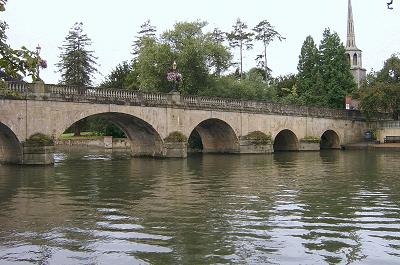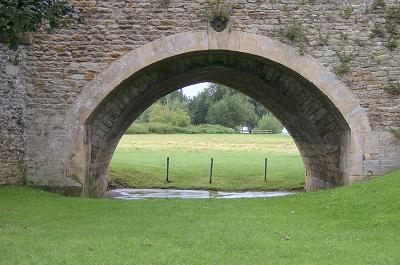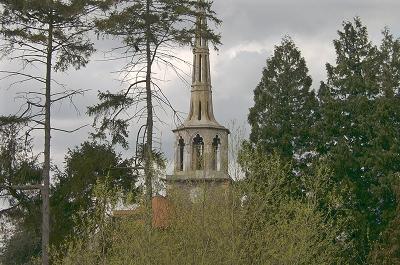Wallingford
 Wallingford Bridge
Wallingford Bridge
Wallingford Bridge is a bit of a mongrel. The bridge was widened in 1809, and as a consequence the arches on the upstream side are rounded, while those on the downstream side are pointed. You can just imagine the construction company foreman saying “Just cover it with a bit of cement and we can all get down the pub for a swift half. No-one will ever notice.”
 Round Arches Upstream, Pointed Arches Downstream
Round Arches Upstream, Pointed Arches Downstream
The area has been strategically important since early times being the lowest place on the river that was fordable. So important did Alfred the Great consider it to be for the protection of Wessex that he built a fortified earthworks around the town much of which can still be seen today.
Wallingford was thought to be such a secure place that it had its own “Royal Mint”. The mint was founded by King Athelstan sometime around 930AD and continued to supply silver coins for over three hundred years until the reign of Henry III.
In 1066 William the Conqueror crossed the river at Wallingford on his way to be crowned at London. William immediately recognised the strategic importance of this crossing and ordered a stone castle to be built to guard it. The castle was completed in 1071 and was of the typical Norman motte and bailey design. The Normans and their successors deemed this castle and surrounding area to be extremely important. The Domesday Book records that Wallingford was one of only eighteen towns in England with a population that exceeded two thousand. Wallingford was granted a Royal Charter in 1155 by Henry II, thirty two years before London received the equivalent accolade.
The town boomed during the middle ages and was a major trading centre. The castle was a Royal Residence until the Black Death came calling in 1349. Plague killed many, and the town started to fall into decline. The final straw for Wallingford’s fortunes was the construction of Abingdon Bridge in 1416 which had the effect of taking much of the town’s trade away.
 Spire of St Peter’s Church, Wallingford
Spire of St Peter’s Church, Wallingford
During the English Civil War Wallingford became a Royalist stronghold and held out against Cromwell’s New Model army for sixteen weeks. The castle then became used by the Roundheads as a prison, but such was the risk that it could once again be used as a strong military centre against him if recaptured that Cromwell ordered it to be demolished stone by stone.
Wallingford has been peaceful ever since; peaceful that is apart from all of the murders. Dame Agatha Christie lived here and her fertile imagination gave fruit to the mystery stories beloved by so many. The queen of the “who dunnit” is still one of our best-selling authors and must have walked many times along these riverbanks.
< Previous Page | Next Page >